Are you tired of looking at unsightly rust stains on your porcelain bathtub? Don’t worry—there are several methods you can use to effectively remove rust stains and restore your bathtub’s shine and cleanliness.
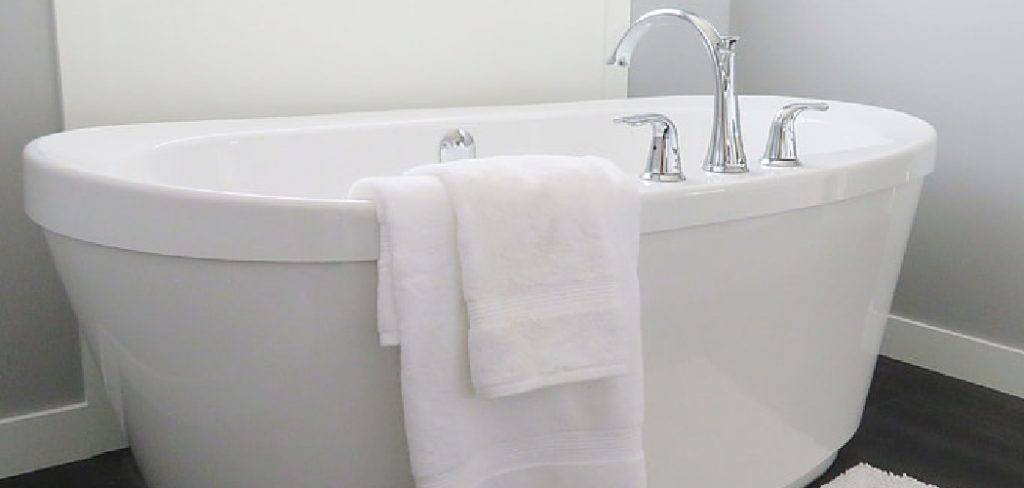
When it comes to maintaining the pristine condition of a porcelain bathtub, one common issue many homeowners face is the persistence of unsightly rust stains. These stains, which can be caused by iron-rich water or deteriorating plumbing, not only detract from the aesthetic appeal of your bathroom but can also lead to more serious damage if left untreated. Fortunately, with the right techniques and materials, removing rust stains from a porcelain bathtub can be both simple and effective.
In this guide, we’ll explore various methods and tips on how to remove rust stains from a porcelain bathtub, ensuring your bathtub remains sparkling clean and rust-free.
What Will You Need?
Before diving into the different methods, gathering all the necessary supplies is important to effectively remove rust stains from your porcelain bathtub. Here are some items you may need:
- Baking soda or borax
- White vinegar
- Lemon juice
- Hydrogen peroxide
- A soft sponge or brush
- Microfiber cloth or towel
- Protective gloves and eyewear (if using chemical solid cleaners)
Once you have these materials, you’re ready to get started!
10 Easy Steps on How to Remove Rust Stains From a Porcelain Bathtub
Step 1. Prepare the Workspace:
Before starting the cleaning process, ensure your workspace is well-ventilated to prevent inhalation of any strong odors from cleaning agents. Open windows or turn on exhaust fans to allow fresh air to circulate. Next, remove personal items, such as shampoo and soap bottles, from the tub area to prevent them from getting in the way or getting damaged during cleaning.
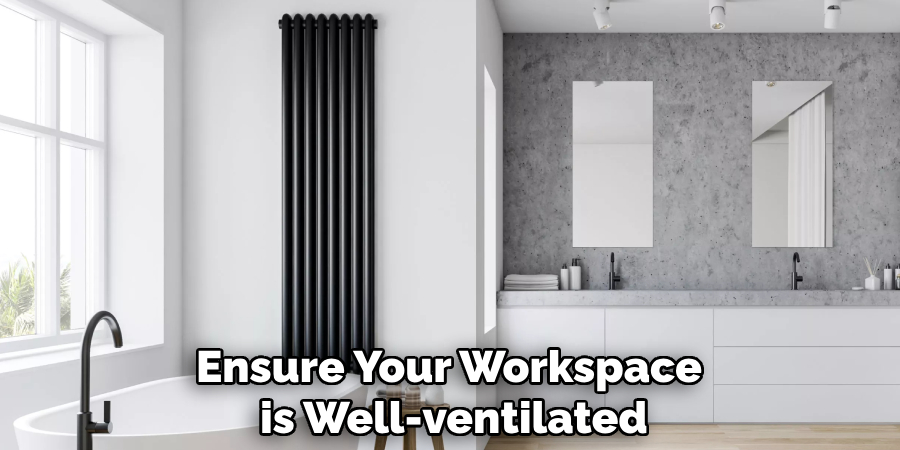
Wear protective gloves and eyewear to safeguard your skin and eyes from any chemicals you might use. If you’re working with harsh cleaners, this step is critical to ensure your safety. Make sure the bathtub surface is dry, as this will help prevent the cleaning agents from becoming diluted and ensure they work effectively on the rust stains. A clean and organized space will make the process much smoother and more efficient.
Step 2. Apply Baking Soda or Borax:
Once your workspace is ready, sprinkle a generous amount of baking soda or borax directly onto the rust stains. These natural abrasives are effective in breaking down rust deposits without causing damage to your porcelain surface. Allow the powder to sit on the stains for about 10 to 15 minutes, giving it time to penetrate and loosen the rust particles. This method is eco-friendly and gentle, reducing the risk of scratching or dulling the finish of your bathtub. The key is to be patient and allow the powder to work its magic before moving on to the next step.
Step 3. Scrub the Stains Gently:
After allowing the baking soda or borax to sit, gently scrub the stained areas. Use a soft sponge or brush to scrub the surface in a circular motion. This technique will help lift the rust particles without scratching the porcelain. If you encounter tough stains, apply a bit more pressure, but be careful not to damage the bathtub surface.
For persistent stains, you may want to dip the sponge or brush in a bit of water to create a mild paste with baking soda or borax. This will enhance the cleaning power without harming the finish. Remember, the goal is to remove the stains while maintaining the glossy look of your tub. Once you are satisfied with the scrubbing, rinse the area with water to remove any residue and prepare it for the next step.
Step 4. Apply White Vinegar or Lemon Juice:
If the rust stains persist after scrubbing with baking soda or borax, the next step is to use white vinegar or lemon juice. Both are acidic cleaners that effectively dissolve rust without damaging the porcelain surface. Soak a microfiber cloth or soft sponge in white vinegar or freshly squeezed lemon juice, then apply it directly to the stained areas.
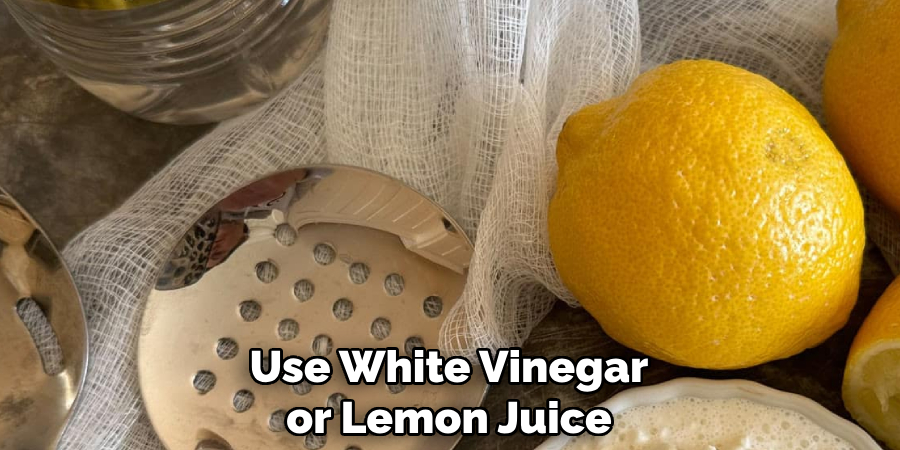
Let the fabric sit on the stains for 10 to 15 minutes to give the acid time to break down the rust. You may gently rub the stained areas in circular motions for added cleaning action. After treating the stains, rinse the bathtub thoroughly with water to remove any acidic residue.
Step 5. Use Hydrogen Peroxide for Stubborn Stains:
If the rust stains are still visible after using vinegar or lemon juice, hydrogen peroxide can be an effective solution for these persistent spots. Pour a small amount of hydrogen peroxide directly onto the rust stains and let it sit for approximately 30 minutes.
During this time, the hydrogen peroxide will work to break down the tougher rust particles. Afterward, use a soft sponge or cloth to scrub the stained area gently, helping to lift any remaining discoloration. It’s essential to rinse the entire surface thoroughly with water to ensure no peroxide residue remains, as leaving it can potentially damage the finish over time. This method is beneficial for tackling the last traces of rust, leaving your porcelain bathtub looking clean and renewed.
Step 6. Rinse and Dry the Bathtub:
After using hydrogen peroxide on stubborn rust stains, it is essential to rinse the entire bathtub to ensure all cleaning agents are thoroughly cleaned and loosened rust particles are washed away. Use warm water to rinse the surface, ensuring you reach all treated areas to remove residual cleaning solutions. Once rinsing is complete, dry the tub with a clean microfiber cloth or towel. This step is crucial as it helps prevent water spots and any potential new rust formations caused by lingering moisture. Drying your bathtub thoroughly enhances its shine and maintains its pristine condition for longer.
Step 7. Polish the Porcelain Surface:
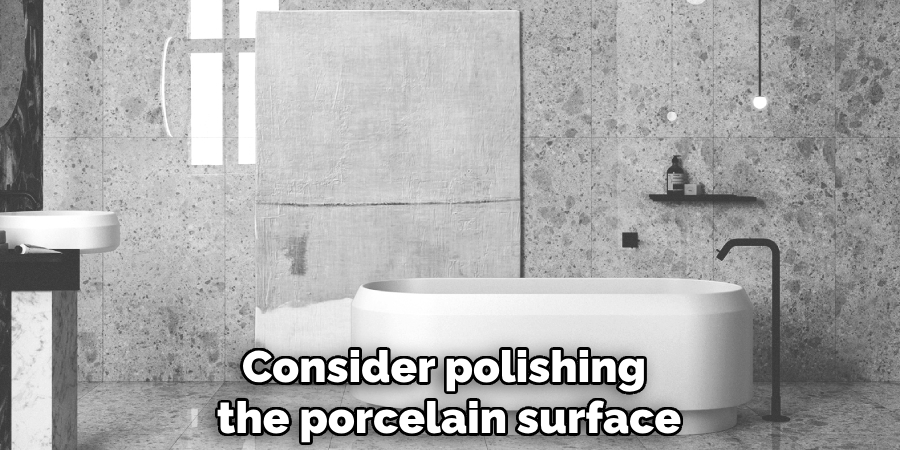
Consider polishing the porcelain surface to restore the bathtub’s shine and create a protective barrier against future stains. Use a non-abrasive porcelain polish or a mixture of baking soda and water to make a gentle paste. Apply the polish or paste with a soft cloth, working in small circular motions across the entire bathtub, focusing especially on areas where rust stains were previously present. This will help smooth out any minor scratches and enhance the gloss of the surface. After polishing, remove any excess residue with a clean cloth dampened with water.
This step not only refreshes the appearance of your bathtub but also helps maintain its lustrous finish, prolonging the time between necessary cleanings.
Step 8. Maintain Regular Cleaning:
To keep your bathtub looking immaculate and prevent the recurrence of rust stains, it’s important to establish a regular cleaning routine. Aim to clean your bathtub at least once a week using mild, non-abrasive cleaners to maintain the porcelain’s shine without causing damage. Regularly check for early signs of rusting around metal fixtures or drains and promptly address them with the abovementioned methods.
Consider investing in a water softener if hard water is a recurrent problem, as it can significantly reduce mineral buildup that leads to rust. Consistent maintenance will enhance the bathtub’s appearance and prolong its lifespan, ensuring it remains a relaxing and inviting space for your baths.
Step 9. Protect with a Tub Liner:
Consider installing a tub liner for added protection against rust and other types of stains. Tub liners are custom-fitted acrylic coverings designed to fit over your existing bathtub. They provide a clean and durable barrier and offer a quick facelift for older tubs that may have seen years of wear and tear.
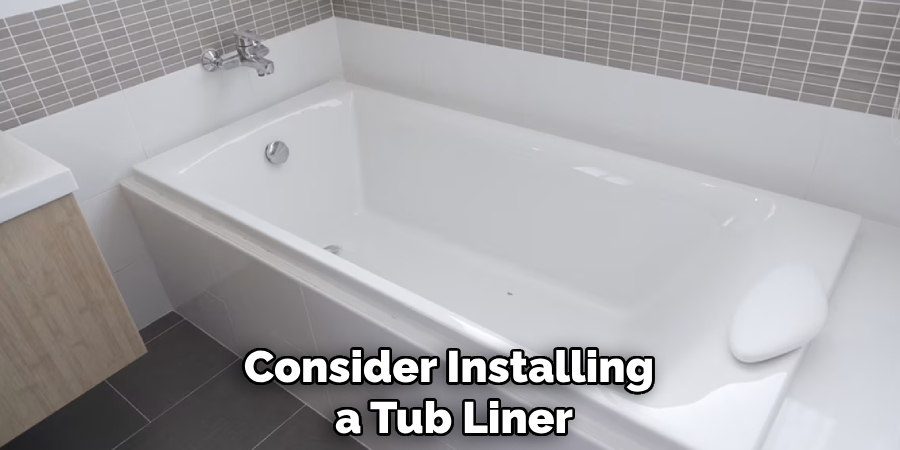
Installing a tub liner is generally best left to professionals to ensure a proper fit and seal. Once fitted, the liner will help prevent any new rust formations from occurring by keeping moisture away from the original tub surface. This long-term solution not only maintains the aesthetic appeal of your bathtub but also simplifies cleaning, making it easier to enjoy a pristine bathing experience.
Step 10. Evaluate Professional Refinishing:
If your bathtub’s rust or stains prove too challenging to manage with DIY methods or if its surface sustained considerable damage, considering professional refinishing is the next step. Professional refinishing services involve recoating your bathtub with a sleek, durable finish that rejuvenates its appearance and extends its life.
This process typically includes repairing cracks or chips and applying a new, glossy coat that mimics the original porcelain finish. It’s a cost-effective alternative to a complete bathtub replacement and can significantly upgrade the look of your bathroom. When selecting a professional refinishing service, ensure they are reputable and experienced in working with your specific bathtub material to achieve the best results.
By following these steps, you can effectively remove rust stains from your porcelain bathtub and maintain its lustrous appearance for years.
Conclusion
Maintaining a pristine porcelain bathtub requires diligence and the right approach to tackle rust stains effectively.
By following the detailed steps outlined on how to remove rust stains from a porcelain bathtub, from natural solutions like vinegar and lemon juice to stronger options like hydrogen peroxide, homeowners can restore their bathtub’s shine without damaging its surface.
Regular cleaning and preventive measures, such as using a tub liner or considering professional refinishing, prevent future rust stains and prolong the bathtub’s lifespan. Consistent maintenance ensures the porcelain finish’s longevity and keeps your bathing space inviting and serene.
With these tips, you can enjoy a rust-free and sparkling bathtub, enhancing your bathroom’s function and aesthetic appeal.
Specialization:
- Master of wheel-throwing, hand-building, and advanced glazing techniques
- Focus on creating both functional pottery and decorative art pieces
Recognition:
- Celebrated by collectors and art enthusiasts for creating one-of-a-kind pieces that blend artistry with functionality
- Participates in local and national exhibitions, earning accolades for his innovative designs and craftsmanship
Passion:
- Deeply committed to exploring and pushing the boundaries of ceramic artistry
- Continuously experiments with new materials, firing techniques, and artistic concepts to evolve his craft
Personal Philosophy:
- Believes in the transformative power of art, aiming to evoke emotions and connections through his ceramic creations
- Advocates for sustainability in ceramics, using eco-friendly materials and practices whenever possible


